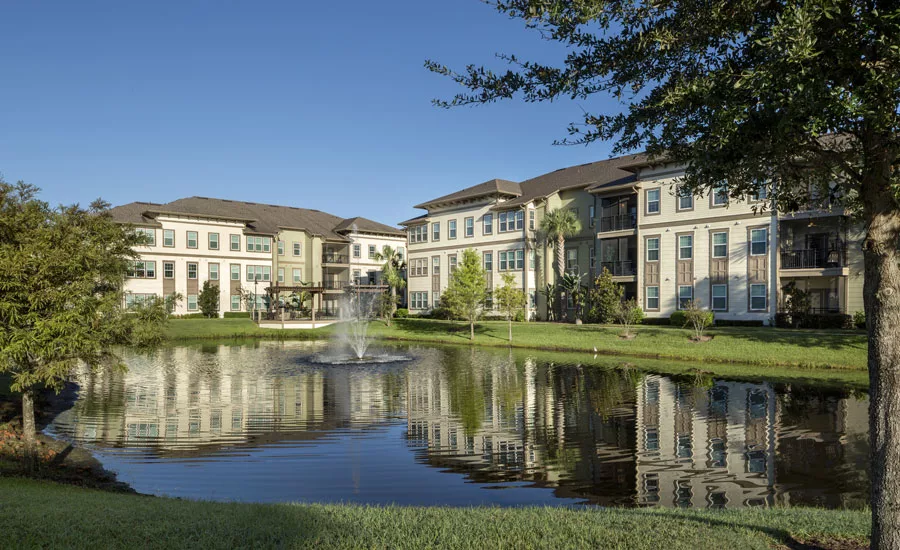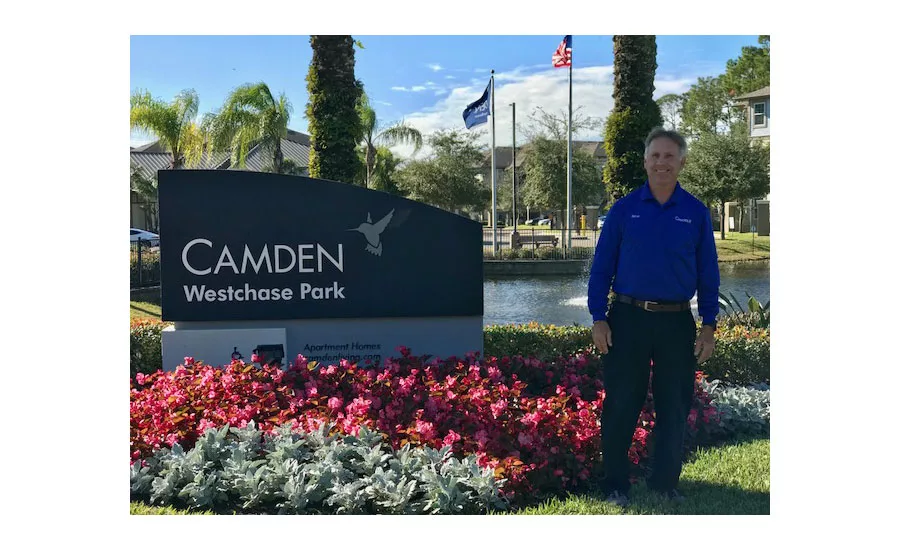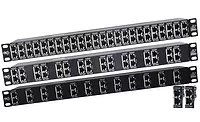Surge Protectors Save Property Management Company Thousands in Replacement Equipment


Lightning is known to occur on average 44 times a second over the entire earth, totaling nearly 1.4 billion flashes a year. According to the National Oceanic and Atmospheric Administration (NOAA), an average bolt of lightning carries 20,000 amperes of current and these bolts can strike the ground, the air or inside clouds, with inside cloud strikes being the most predominant.
Forecasters can and do forecast the likelihood of intense lightning activity, but it is impossible to forecast individual strikes since lightning is so widespread, frequent and random. In the U.S., lightning strikes the ground approximately 25 million times each year; and the highest frequency of cloud-to-ground lightning is in Central Florida between Tampa and Orlando, making it the lightning capital of the United States.
Protection Against Lightning Strikes
To help guard against the damage that lightning strikes can cause, residences and businesses alike can take preventive measures to divert high levels of electrical current generated by lightning strikes. This can range from simply unplugging an electrical device to installing a lightning rod to provide a path for the electricity to reach the ground more safely. While this will help prevent a fire, a lightning rod will not prevent a damaging power surge.
Fire alarm and other life safety and security system failures in offices and large residential complexes are often the result of power surges caused by lightning strikes on unprotected systems. A common misconception is that because some of these safety and security devices have built-in surge protection, no additional protection is necessary. The truth is that any built-in surge protection is not sufficient to protect a system from all power surge dangers or a lightning strike anywhere near the facility. Protecting these systems with commercial surge suppression solutions is necessary to ensure reliable operation and overall safety for building occupants.
Commercial surge suppression solutions, often referred to as surge protective devices (SPD), are designed to limit the voltage supplied to an electric device by either blocking or by shorting to ground any unwanted voltages above a safe threshold. They are typically installed on power distribution panels, process control systems, communications systems and other building systems to help protect against everyday electrical surges or an extreme flow of current suddenly added by a lightning strike.
High Risk Properties
SPDs are an essential tool for real estate management companies such as Camden Property Trust. The company builds, rents, maintains and manages apartment complexes throughout the country and has ownership interests in more than 160 apartment communities containing up to 65,000 apartment units. The high-risk properties for surge and lightning damage of concern to Camden are located primarily in Florida. In response to these concerns, Camden has done extensive analysis on the costs associated with lightning strikes, both financial and otherwise.
”As a management company, we don’t make money by replacing electronics; we make our profit by keeping our residents happy and that is our main goal,” says Rusty Stone, Technical Project Manager for Camden Property Trust. “And we keep our residents happy by preventing unwelcome distractions such as downed equipment due to lighting strikes or power surges.”
With the collected information on the number and location of power surges and lightning strikes, the Camden team created a priority list of buildings that needed to have SPDs installed. Lightning strikes are constantly blowing out the fire protection systems in these buildings and leaving occupants vulnerable. The list includes approximately 30 buildings throughout the Tampa-Orlando region that will have SPDs installed this year and another 50 or so that are scheduled for next year.
The fire alarm control panels (FACPs) installed in each building monitor sensor inputs, control alarms and outputs to other systems, and relay information. Telephone lines are often connected to the FACP to enable management notifications and to summon emergency response automatically during alarm conditions. Because they are electrical conductors that pass outside the facility, they are vulnerable to electrical disturbances – including accidental contact with power lines, or induced currents from lightning strikes that could be miles away. Any such power surge can be passed into the FACP and cause damage. The same caution holds true for signaling line circuits (SLCs) that connect multiple buildings together and are located outdoors.
Protecting the fire and life safety systems was a priority for Camden and one building in the Tampa area was being particularly hard hit and needed immediate attention. The building’s fire alarm system contains 14 sub-panels that report to the main panel. Surge protection was installed on the main panel, but it was the 14 sub-panels that kept getting hit. Panel replacement costs were approximately $1,000 per panel and another $400 to $800, depending on the type of panel, for installation. Added to those costs were charges for fire watch and down time which could run anywhere from five to seven days.
DITEK SPDs Prove Their Worth
DITEK, a Florida-based manufacturer of surge protection and UPS solutions for the commercial and industrial market was called in to help solve Camden’s problem. The company installed a DITEK 2MHLP24B surge protector on every sub-panel and a bigger, more robust DTK-120SRD SPD on the main panel. Within a week after the installation, the building was hit again with a major strike.
Rusty explains, “This particular lightning strike was so powerful that it actually blew a hole in the ground and melted all the underground wiring. It took out our gate entry and our video surveillance system. Understanding that nothing can withstand a direct hit like this one, the SPDs still proved their worth. Repair was just a matter of moving two wires on the surge panel as opposed to replacing each panel and being on fire watch until the replacement was made. It didn’t take long to go through every building to check each SPD, pop in a new one where needed or just move the wires over, so it could take the second hit. We were back up in a couple of hours.”
The DITEK 2MHLP24B surge protectors provide signal, data and loop circuit protection. Easy installation and replacement is assured with a field-replaceable modular edge-card connection design with required snap-track bases and a single point ground. The multi-stage hybrid design with SAD technology provides the best possible protection for fire alarm panels NAC, SLC, PIV and IDC circuits as well as burglar alarm panels NAC and IDC.
“For pennies on the dollar, we saved thousands of dollars by installing the DITEK SPDs,” adds Rusty. “In this particular incident, the installation paid for itself.”
Following the severe lighting strike, several additional strikes have since happened and each time the DITEK SPDs have provided the needed protection. Readouts on the main panel indicate problems with any of the sub-panels, making it faster and easier for Rusty’s crew to get the system back up and running.
While scientists understand generally what conditions are needed to produce lightning, there is still debate about exactly how a cloud builds up electrical charges and how lightning forms. There is however no debate as to how SPDs work and the protection they provide.
Looking for a reprint of this article?
From high-res PDFs to custom plaques, order your copy today!






